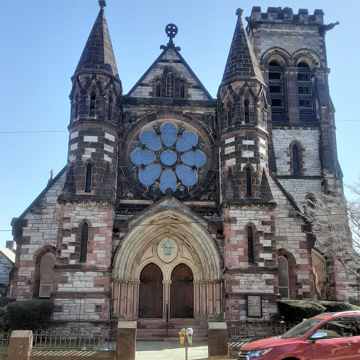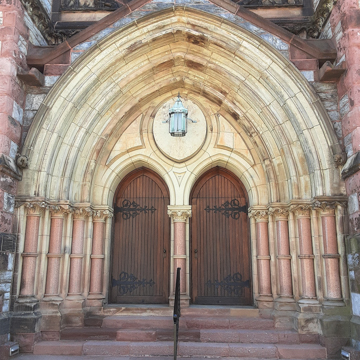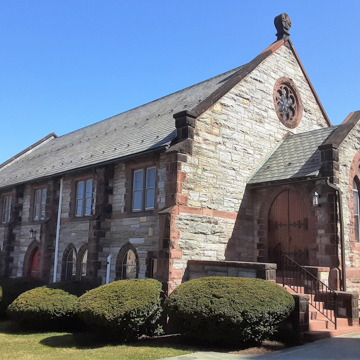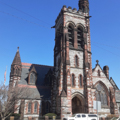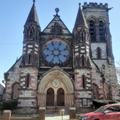The harsh contrast of the Richardsonian color scheme in red sandstone with white Ohio freestone sets off the Gothic detail of this remarkable church and its massive square tower. Congdon was the son of a founding member of New York's Ecclesiological Society (the American version of the English group that sought to restore the forms and rituals of medieval worship). The massing of the properly oriented west front recalls H. H. Richardson's proposed adaptation of Notre-Dame-de-la-Grande in Poitiers as the facade for Trinity Church in Boston. In good Ruskinian fashion, Congdon drew on regional botany as the source of the foliate capitals of the nave arcade. The Coleman family of nearby Cornwall paid for the church. Compare it with their workers’ Methodist church by John McArthur Jr. in Cornwall ( LE5). Chestnut Street to the east of St. Luke's widens into a handsome tree-lined parkway that contains Lebanon's mansion row.
You are here
St. Luke's Episcopal Church
If SAH Archipedia has been useful to you, please consider supporting it.
SAH Archipedia tells the story of the United States through its buildings, landscapes, and cities. This freely available resource empowers the public with authoritative knowledge that deepens their understanding and appreciation of the built environment. But the Society of Architectural Historians, which created SAH Archipedia with University of Virginia Press, needs your support to maintain the high-caliber research, writing, photography, cartography, editing, design, and programming that make SAH Archipedia a trusted online resource available to all who value the history of place, heritage tourism, and learning.




